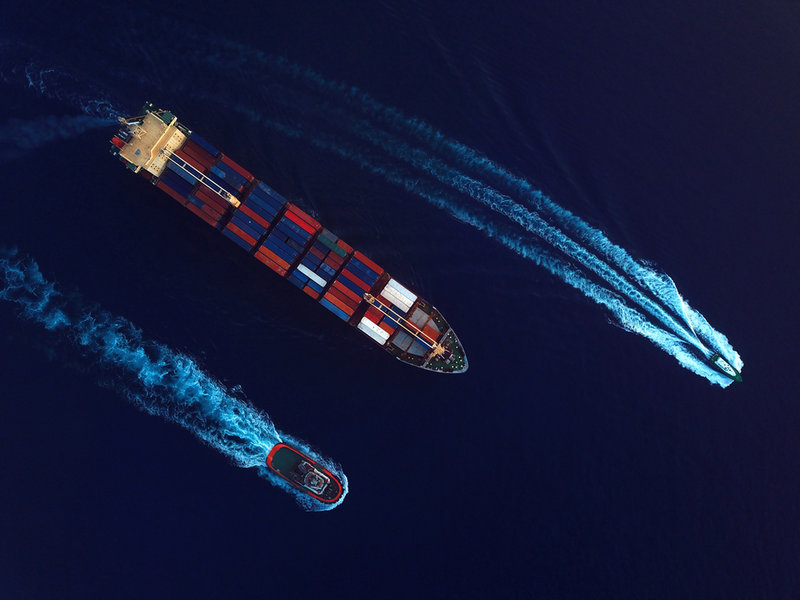Feature
Industry predictions: what’s in store for 2024?
Peter Nilson finds out what industry experts are predicting will be the key themes in the maritime industry over the coming year.

The maritime industry is facing challenges on multiple fronts, and the solutions to these will dominate the industry in the coming year.
The environmental impact of shipping is, for many, the most important theme in the maritime sector. Reducing the carbon footprint through new fuels, optimising existing fuel efficiency, novel propulsion methods, or improving port operations are all core facets to reaching net-zero.
Improvements in fleet management will also continue to be an important trend, as the resilience of the supply chain and global logistic network continues to be questioned.
The digital transformation of shipping will also continue, as new marine platforms are developed and existing ones consolidated. Autonomous technology will no doubt also continue its development. But with these trends will also come a renewed importance on cybersecurity to protect both vessels and ports from cyber threats.
So, what will the next year hold for the maritime sector, and what are the key themes to keep an eye on? We hear from a number of industry experts to learn what they think 2024 holds for the maritime sector.
“Fuel producers and their investors will be closely watching the debate around potential IMO mid-term measures."
"With the level of ambition from the International Maritime Organization (IMO) now clear, a renewed focus on maximising the energy efficiency of the fleet will be required to meet its 2030 carbon intensity targets.
"Ever-increasing levels of digitisation and system interconnectivity could support improved operational efficiency. Meanwhile, the growing adoption of innovative propulsion improvements, optimised hull forms, air lubrication systems, and wind assistance technologies is set to boost technical efficiency.
"Widespread uptake of wind propulsion could also go some way to meeting the IMO’s targets to have 5%-10% of the fleet’s energy met by zero or near-zero GHG technologies, fuels, or energy sources by 2030. However, expectations are that significant quantities of fuel with very low lifecycle GHG emissions will be needed to achieve this.

Chris Bell, senior maritime consultant, Arup
"The proportion of alternative-fuelled vessels in the newbuild orderbook suggests that the global fleet will have the capability of operating on these fuels before 2030, so the question is whether production will manage to scale to meet the demand.
"The next year or two will need to see more fuel projects reaching the final investment decision if these targets are to be met, given the development and construction timeline for major renewable energy generation and fuel production plants. Fuel producers and their investors will be closely watching the debate around potential IMO mid-term measures, which we can expect to heat up on the way to their planned adoption in 2025.
"Consideration of how to deliver the infrastructure – including the pipelines, terminals, ships, and port facilities – required to efficiently deliver these fuels to where they are needed will also need to start ramping up in the coming years. System-wide changes in the fuel supply chain could generate new opportunities, so stakeholders should carefully consider the role they could play in the transition."
"Embracing technology is now imperative for ship owners and operators."
"Digitalisation efforts of global shipping companies will continue in 2024 in a bid to make shipping operations more efficient and to realise cost benefits.
"Embracing technology is now imperative for ship owners and operators but it is important to onboard modern processes that use automation, machine learning, and cloud-based systems to take that digitalisation journey to the next level. More shipping companies will embrace these forms of technology in 2024 as they continue to improve operational efficiencies and reap the rewards more effectively.
"In the procurement sector, we have witnessed first-hand how these modern systems have made the entire purchasing process a much more seamless process from shelf to ship. Software containing automation and machine learning allows buyers to access a wider selection of suppliers in more markets, enabling decision-makers to make more informed choices that save time and money and improve operations.
"Demand for services that provide these benefits will grow in 2024. Ship owners are realising the benefit of using this technology and it is hoped that they can use machine learning in other areas of their operations to make things more streamlined.

Grigoris Lamprou, CEO, Procureship
"One key issue that will continue to be a factor in 2024, amid this trend of digitalisation, is the quality of data that is being exchanged between all parties in the supply chain. Poor-quality data can often result in procurement managers overspending on parts or services that are not fit for purpose.
"High-quality data offers a better return on investment. While automation has its benefits, shipping companies need to be aware of the risks involved with utilising data from third parties that can impact their bottom line.
"Shipping companies must understand how to use this data effectively in 2024. There is no one-size-fits-all approach to using data so ship owners must identify what data is important to them when it comes to their metrics and KPIs, and focus on that data to ensure it is fit for purpose."
"Stakeholders will need to take action to support the development, adoption, and promotion of electronic Bills of Lading"
"There will be an even greater commitment to digitalisation from everyone involved in international trade. In September this year, the Future International Trade (FIT) Alliance launched the declaration of the electronic Bill of Lading (eBL), which signalled the readiness for change. This showed a public commitment to collaborate on driving digitalisation from 84 industry stakeholders ranging from ocean carriers and freight forwarders to banks, financial associations, and shippers.
"This was a vital step towards ambitions for 100% eBLs by 2030. Replacing paper BLs with electronic equivalents could boost global containerised trade by $40bn per year, and it's estimated that even with a 50% uptake of eBLs, the sector could save as much as $4bn per year by 2030. As a result of faster document handling and reduced human error from implementing eBLs, $18bn in gains can be unlocked for the trade ecosystem.
"BLs take up between 10%-30% of total trade documentation costs. Considering this, it’s highly likely that we’ll see an increase in the use of eBLs in 2024, which this year has seen around 3.2% adoption, up from 2.1% in 2022.

Thomas Bagge, CEO, Digital Container Shipping Association (DCSA)
"The eBL declaration is just the beginning and beyond signing the commitment, in 2024, stakeholders will need to take action to support the development, adoption, and promotion of eBLs, as well as the standardisation of the process.
"In 2024, we’ll see more communication on the benefits of digitalisation. With this rise of digitalisation in the industry, there’ll be an increased interest in the topic of cybersecurity and how integral it is that shipping companies are protected against any potential cyberattacks, whilst improved security will lead to fewer issues and a reduction of errors.
"Sustainability has now become a key part of what is expected in the industry’s digitalisation movement. As well as making trade more efficient and resilient, moving away from paper will save 28,000 trees per year, cutting carbon emissions.
"The eBL declaration is just the beginning. Beyond signing the commitment, in 2024 stakeholders will need to take action to support the development, adoption, and promotion of eBLs and the standardisation of the process, to accelerate the industry closer to a promising digital future."